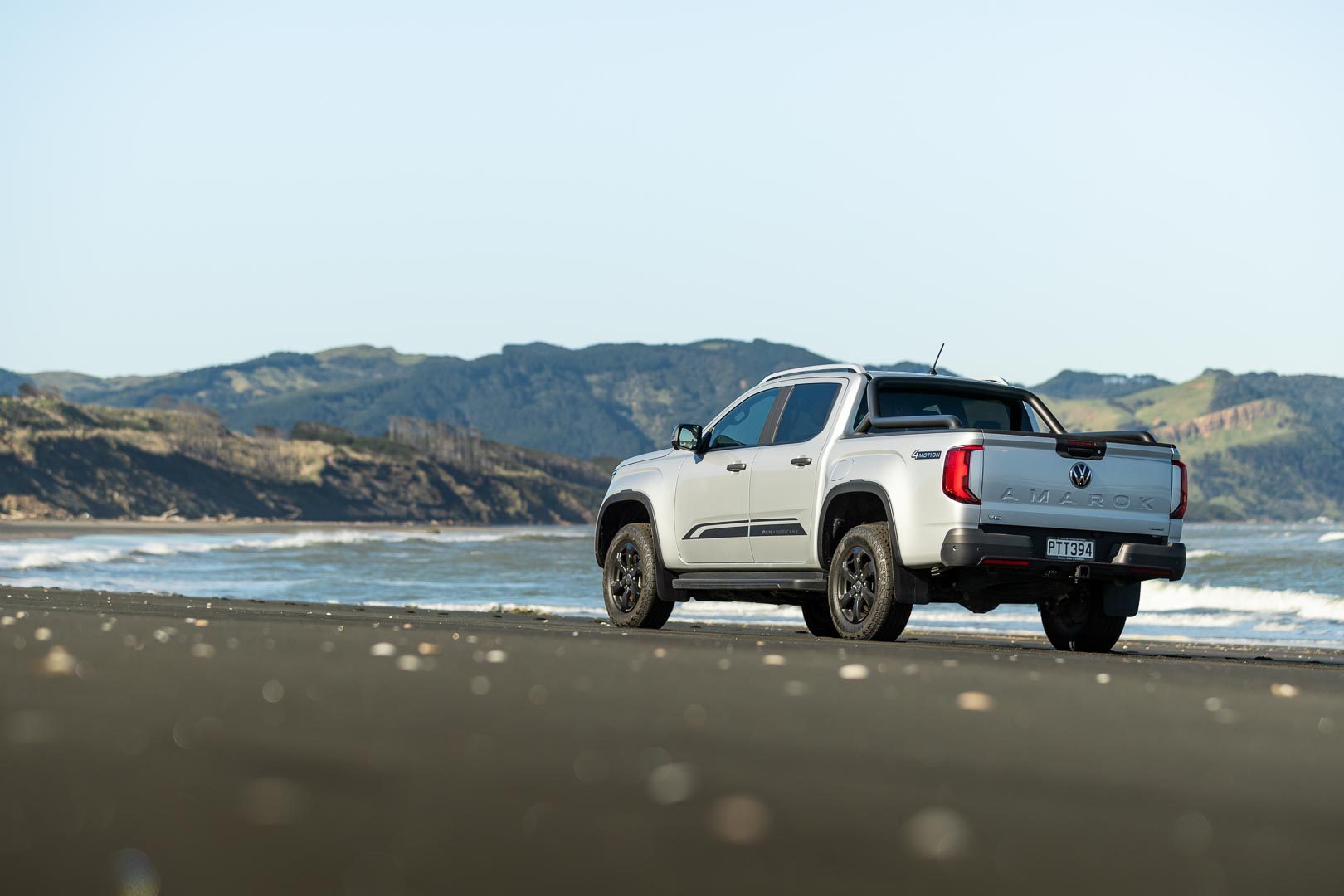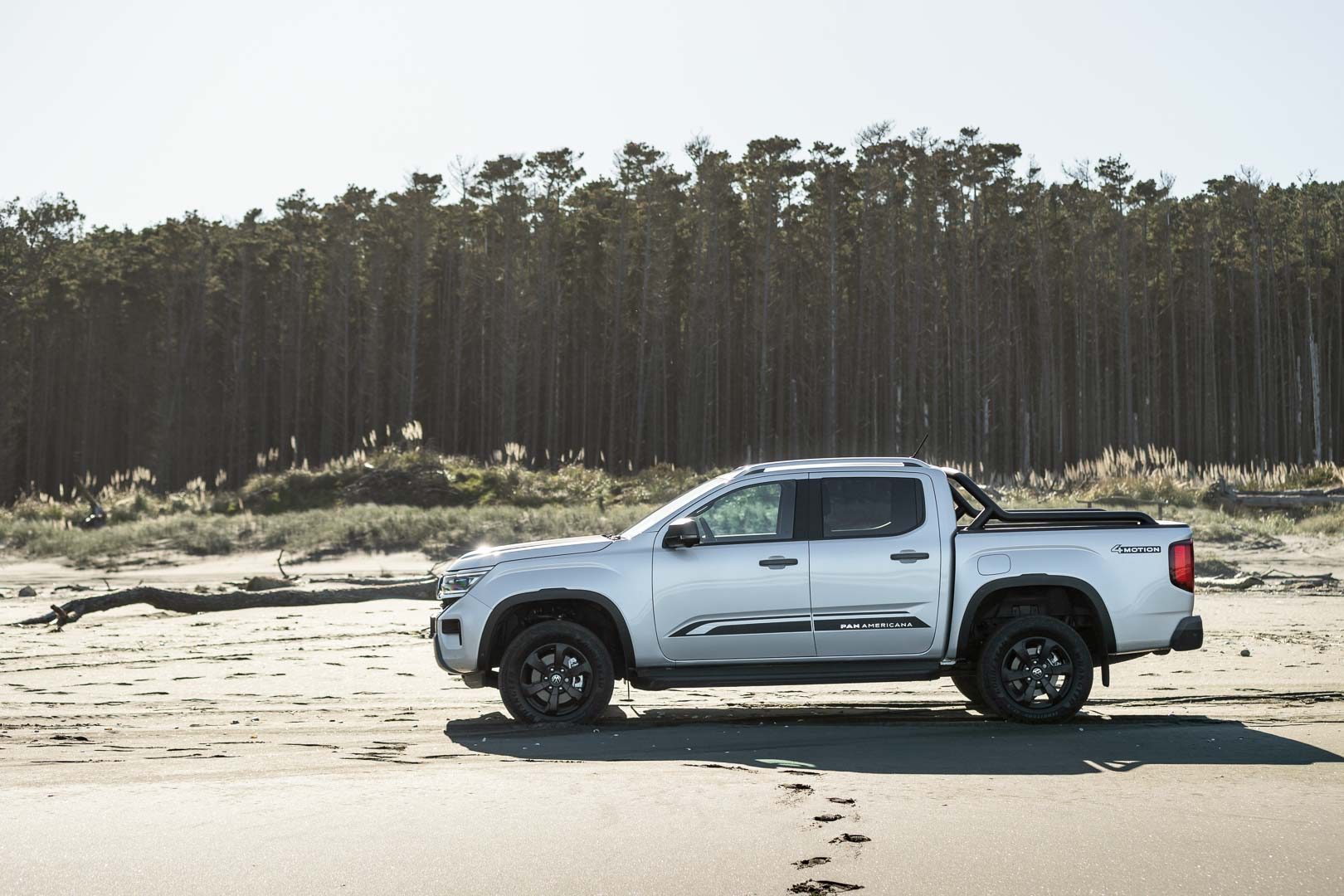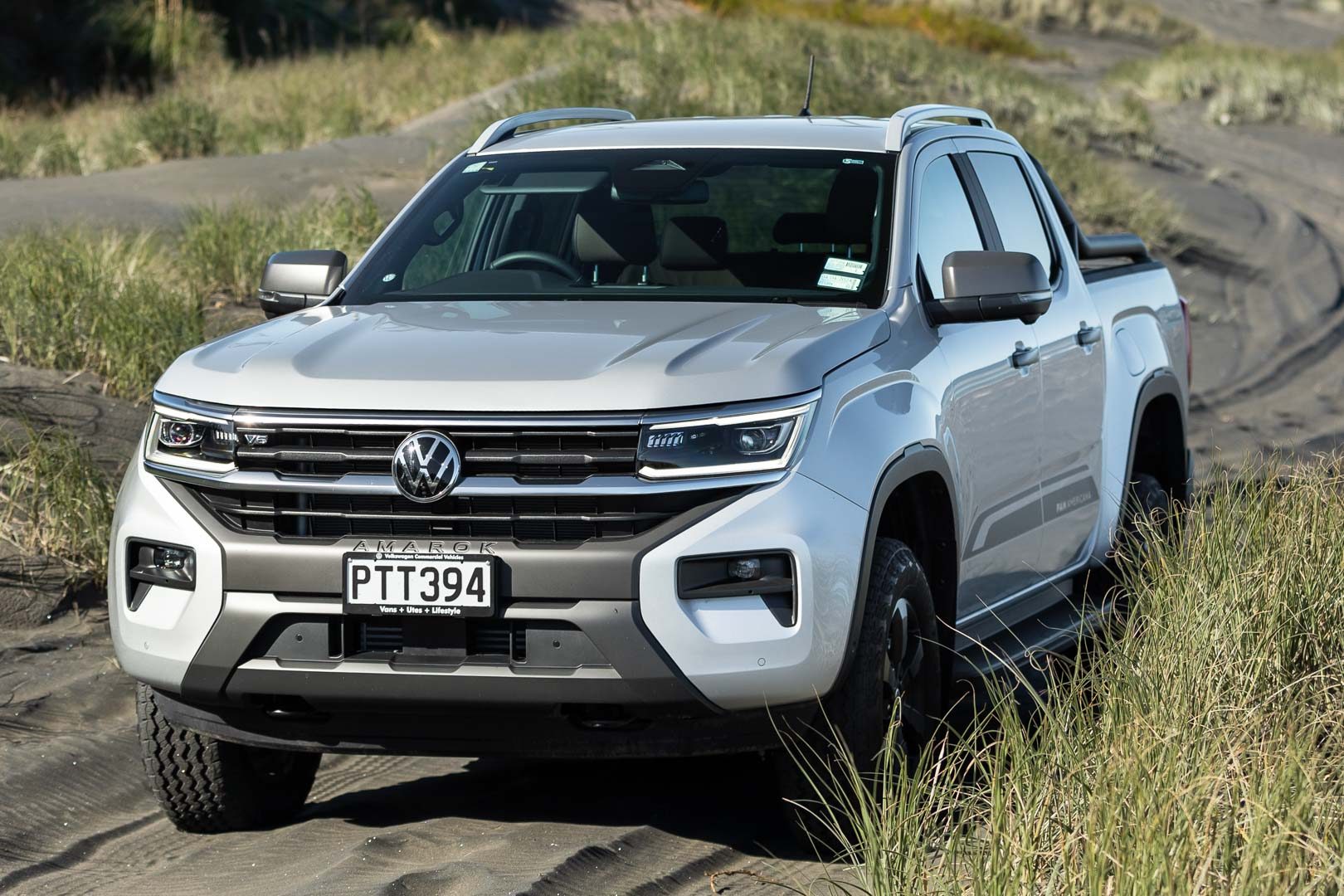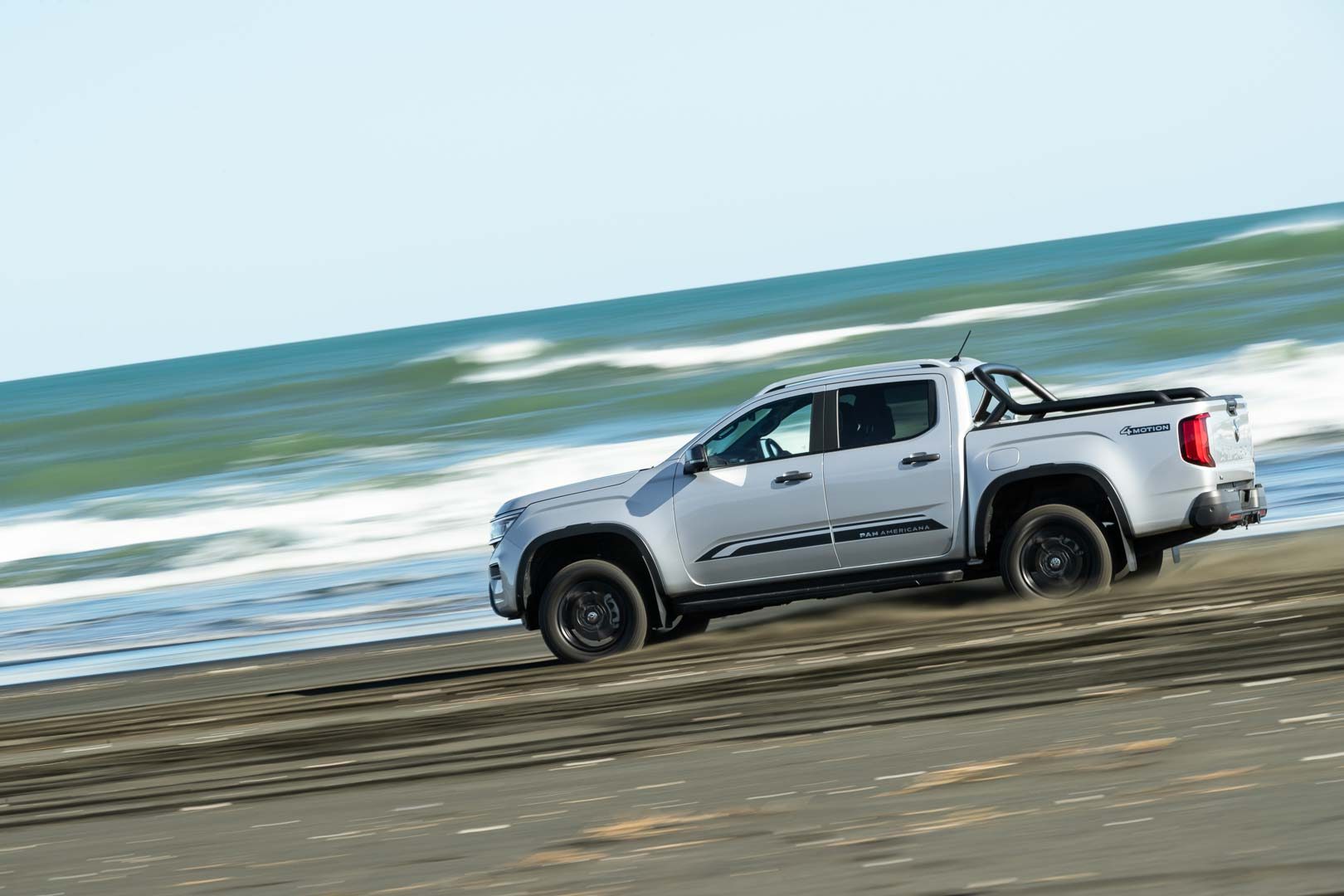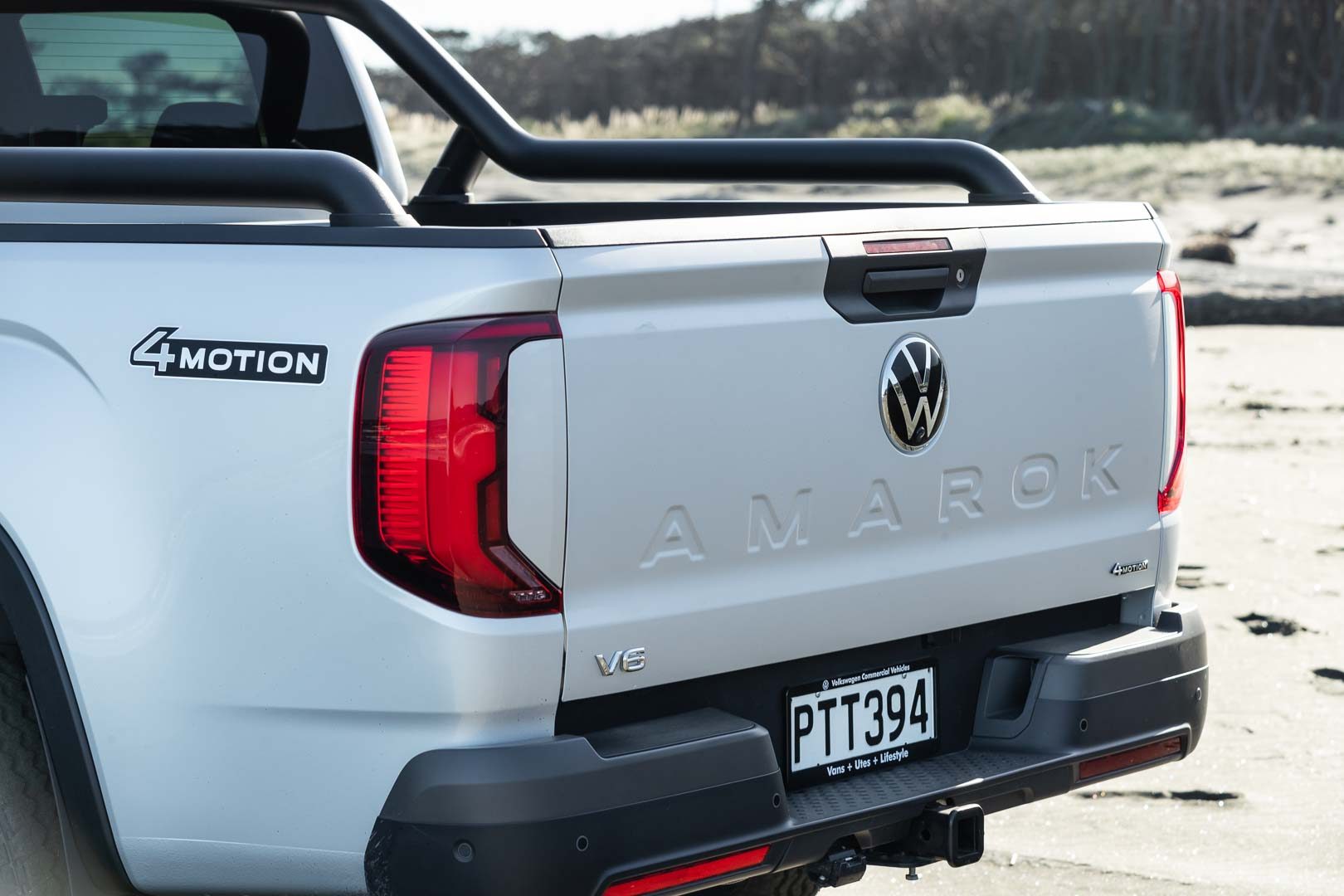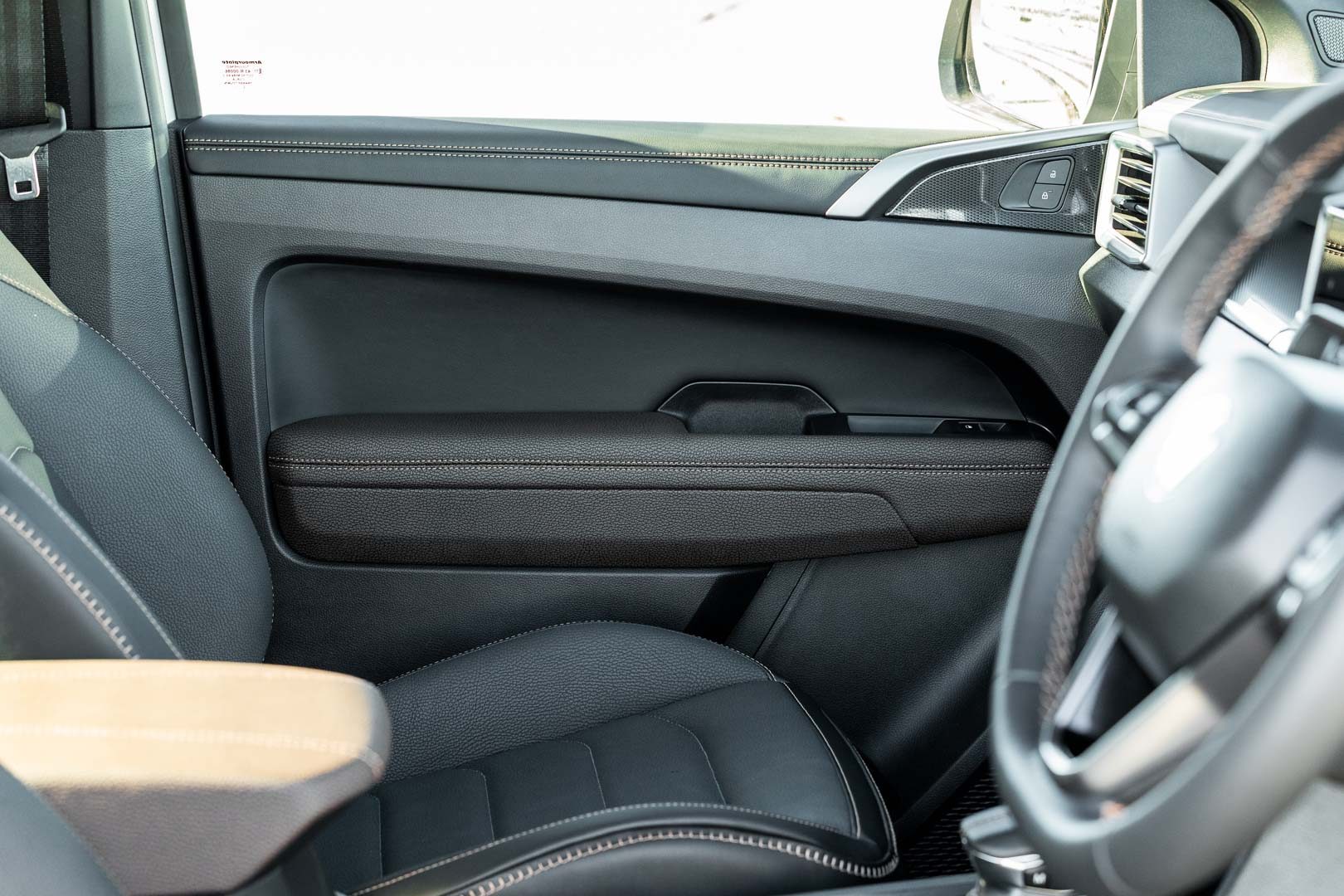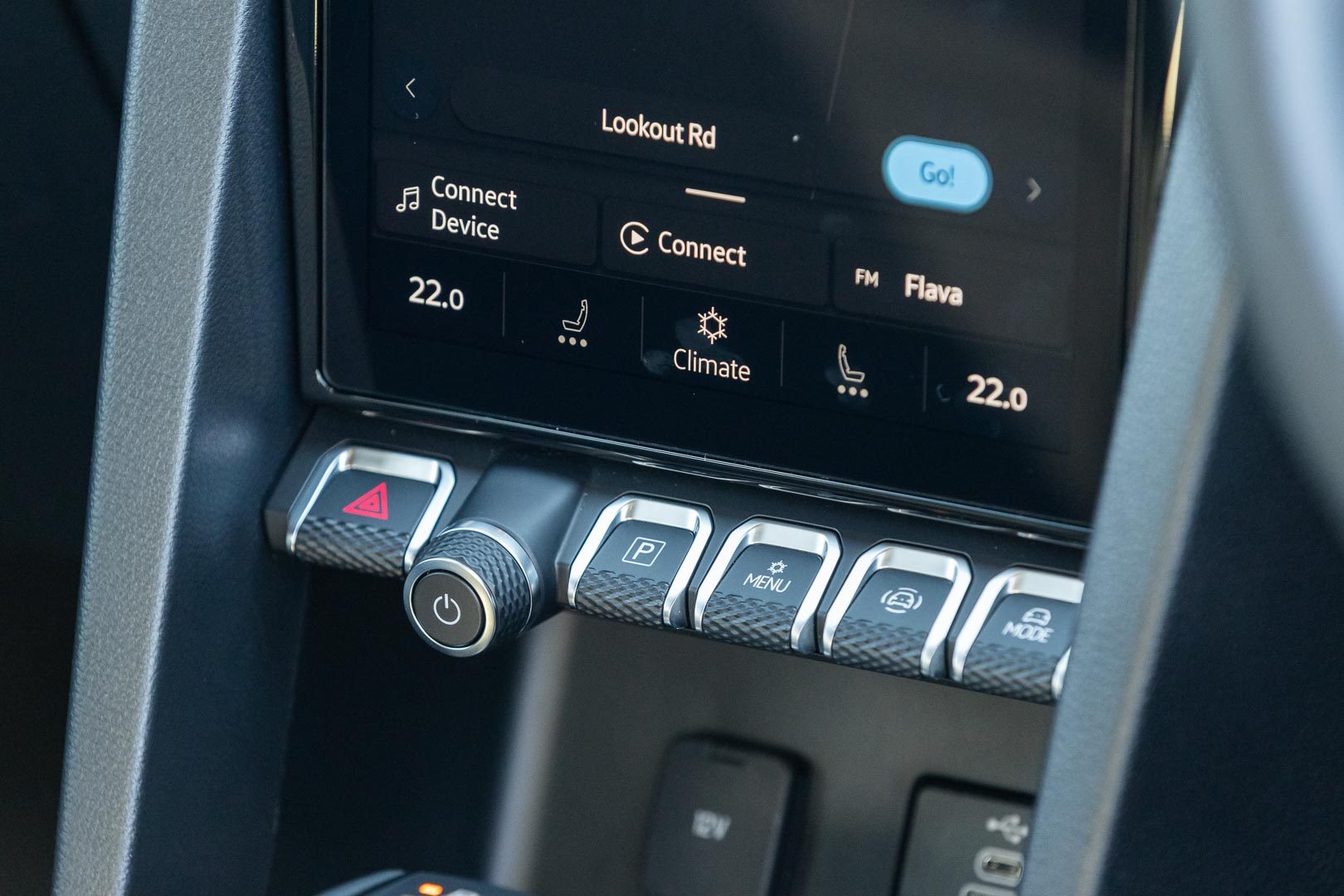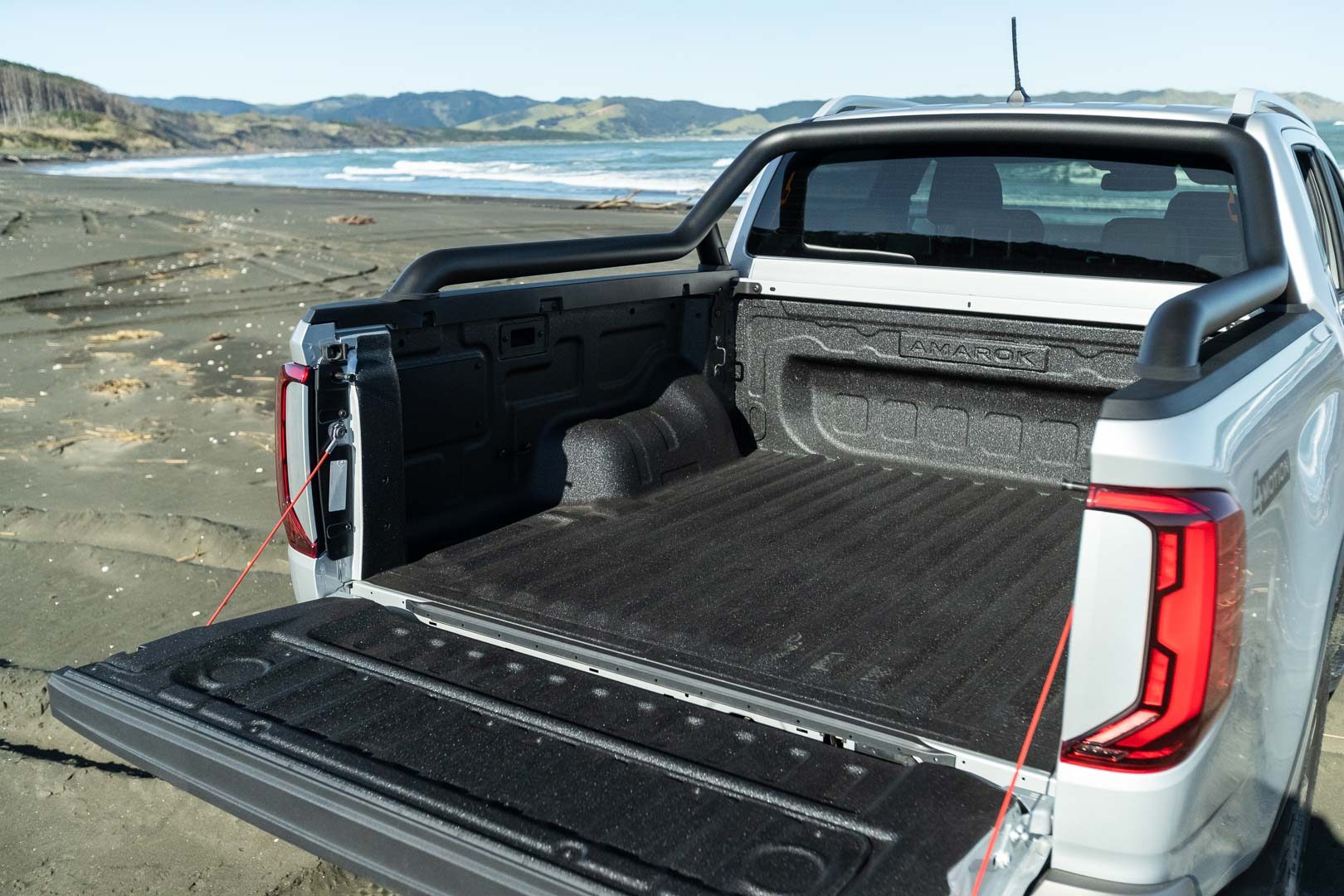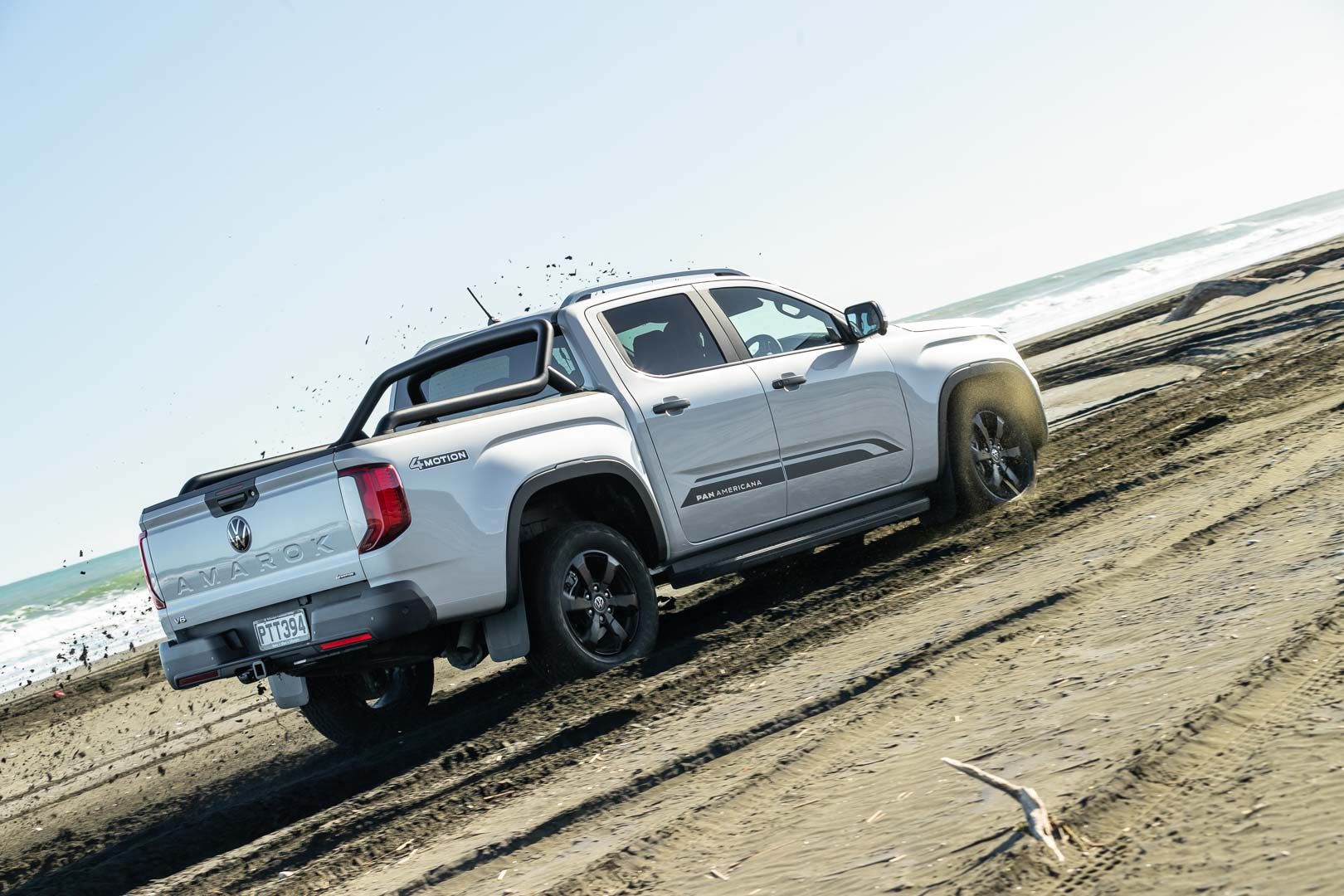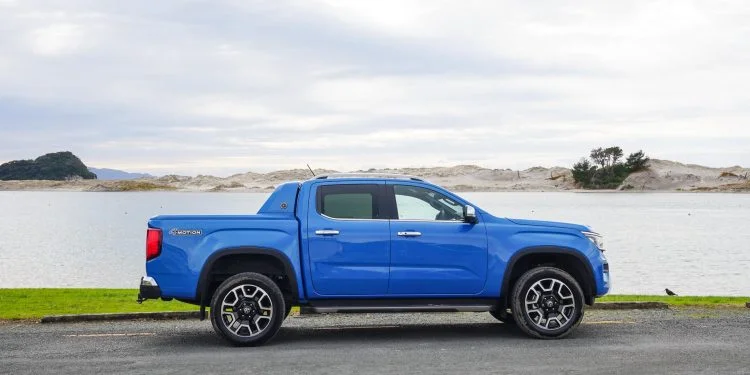2023 Volkswagen Amarok PanAmericana review
Volkswagen’s Amarok has been re-booted more than a decade after it first debuted. It’s a shared effort with Ford.

Volkswagen’s Amarok has been re-booted more than a decade after it first debuted. It’s a shared effort with Ford. Is there enough Volkswagen in it to please the Amarok loyalists?
The new Volkswagen Amarok range might only be a line-up of four models, yet it covers off most needs. There’s the Life for the workers, the Style for middle-management, and then there are the boss trucks, the PanAmericana and the Aventura.
These two range toppers both get V6 power and spec aplenty but each has a different character. The PanAmericana, featured here, is the one with an off-road persona.
It’s named after the longest road in the world, and PanAmericana (henceforth PA) is a sub-brand of sorts for VW, these models styled to appeal to ‘adventurous types’.
For the Amarok PA that means 18-inch black alloys wrapped in all-terrain rubber with chunky ‘up for adventure’ tread blocks.
There’s less chrome and more black bits; bumpers, mirrors, side steps and the styling bar on the tray. The door graphic completes the look.
Unfortunately for the stubbies-wearing 4×4 brigade, the off-road creds haven’t been tweaked; it’s all visual. The PA has the same 217mm ground clearance as the rest of the range and the approach (30) and departure (26) angles are identical too.
However, these have improved over the outgoing model. It comes with roofbars (crossbars sold separately) which have a 350kg static weight limit (85kg dynamic) for those who want to attach a tent and go bush.What’s underneath?
You may have heard that Amarok is now based on the Ford Ranger, collaboration all the automotive rage now, but there are enough Volkswagen bits to satisfy previous owners.
It has its own styling, with minimal exterior body parts shared and a VW-specific interior. It’s the hardware that’s common. For PA, that means the 3.0-litre single-turbo V6 diesel with 184kW and 600Nm on from 1750-2250rpm, similar outputs to the old 190kW/580Nm donk.
Where the former truck had an eight-speed auto, this has ten gears and gains a superior 4×4 drivetrain. The previous model had permanent AWD and an ‘off-road mode’ but lacked a low range.
This one now gets that, a diff lock, selectable AWD (a variable setting that sees the centre diff shuffle torque front and rear) as well as the usual 2H and 4H setting.
There’s also various terrain modes for the traction control system to keep it trucking (in Sand mode for instance, the traction control is relaxed to allow a bit more wheel spin, and the trans keeps the engine revs high for better access to the torque).
There’s also a more sophisticated hill descent control; it’ll limit the speed on steep downhills to prevent skidding, while you can tap the cruise control button to slow it down or increase speed, the VW ute doing it all so smoothly.
Is the new VW Amarok a good drive though?
Amarok is an easy truck to helm. There’s always enough torque on tap from the 3.0-litre; only when you try to punch it fast away from stopped does it feel laggy, and even then not for long.
The auto is smooth, shuffling gears almost seamlessly. It’s all rather quiet too, for a ute, with minimal road and wind noise, the engine refined and hushed.
It’s large but not unwieldy in city traffic, the sizeable turning circle aside but the steering is light, no muscle needed. The stated fuel use is 9.6L/100km while we saw 11.
It’s also settled on the highways. The steering is good, not too heavy with a decent connection.
The V6 models get a ‘comfort suspension’ tune and with the generous sidewalls of the 18-inch rubber the unladen ride is fairly settled at all speeds, the jiggling kept to a minimum.
Bump steer is then less of an issue in the bends so it tracks smoothly and it’s easy to place.
The all-terrain rubber means there’s a bit of squirm on the turn, the big tread blocks scrubbing in a tight corner but they hold on quite well, at least on a dry road.
They are rather vocal during panic braking, the distance a little longer than what we recorded with the Wildtrak V6.
There is no Sport mode and no paddles, neither really missed as you can fiddle with the little rocker switch on the gear lever to lock out the higher gears. Why?
Then it’s not forever trying to hook into top gear and you get better response to throttle inputs, the engine simmering away in its torquey mid-zone. It’s a good hack for a winding road and also when towing.
The 4A setting ensures traction as the torque flows freely from the 3.0-litre. This V6 is more of a slugger; don’t expect a flurry of revs, as it doesn’t spin much past three and half, with the transmission doing a lot of the work.
It’s surefooted on gravel roads thanks to the AWD setting, the stability control only chiming in when things get a bit too loose. It romps around happily in the sand as well, capably powering through the deeper soft stuff.
So how’s the new Amarok’s interior?
We like the Crocodile Dundee-inspired leatherwork in the cabin, specific to PA. It covers the comfy seats, an item that Volkswagen specifically improved over the Ranger, filling them with their own sophisticated foams and improving the form and fit.
They changed the indicator to the left side too. They couldn’t do anything about the stubby shifter unfortunately, the least amazing aspect of the shared platform, the mechanism making it too easy to pluck Park when going for Reverse.
And as a place to rest your hand while poking the touchscreen, it’s just a touch too short. Said infotainment system has been given a VW-specific interface and is easy to navigate through, the big screen giving everything room to spread out.
While there is a wireless charger there’s no CarPlay or Android Auto, only app connect via Mirrorlink.
There are also the good points of the platform; the starter button is easy to find on the steering column (where previous owners still had to insert a key on the old model) and the interior door openers integrated into the handle are clever (making it easier to manage the opening action of big doors).
There’s a good blend of soft touch points and enough hardwearing plastics to live up to ute life. There could be more storage, much of the centre console taken up with the 4×4 buttons.
Amarok is slightly longer now, and most of the lengthening has gone into the wheelbase resulting in more cabin room, particularly for those in the rear.
Here there is a bit more leg clearance, the seat more comfortable with added recline on the seatback, a bigger window and the usual three-point seat belts and Isofix.Hopefully it’s not all show
While not a ute that will typically see too much actual hard yakka, it’s well capable. It’ll likely do more towing than anything.
Amarok comes with a tow bar fitted at the factory, all models with the mandatory 3500kg braked rating and a downball maximum of 350kg.
The sports bar adds the look but might limit your options in terms of putting a lid on the back. It also makes it that much harder to access stuff in the tray from the side.
Said deck gets a spray-in liner, has 1.2m of load width between the arches, and is 1.6m long.
The PanAmericana has the best payload of the Amarok range at 967kg. The tailgate has a helper spring to ease the effort required to lift it up and it now locks off the key fob as part of the remote locking function.
There’s no step integrated in the tray at the rear, so accessing things back there isn’t as easy as with some others.
Premium positioning
Amarok has always had a higher positioning in the market and with its premium aspirations comes the price. At $88,000 for the PanAmericana, it asks more than its Ranger cousin, although there’s no direct variant for comparison.
The Wildtrak X, a high-spec model with an off-road bent is $80,990, and while it has 17s with chunky AT rubber and special off-road-ready Bilstein dampers, it doesn’t have the V6.
The regular Wildtrak V6 is $83,990 while Ford has just announced the Raptor is now available to order with the bi-turbo diesel. That lowers its price significantly (and the associated fees) to now undercut the PA at $86,490.
Here you trade a couple of cylinders for a lot more off-road ability but at the expense of a reduced payload and towing capacity.
The $88,490 Ranger Platinum is a higher speced model with a V6 but is more in line with the $90k Aventura model.
Bottom line is you always pay more for the Amarok. And now you also pay more in fees.
Those who managed to get the first arrivals paid a lot less to the Clean Car scheme, the PanAmericana moving from a fee of $3910 to now paying close to the maximum of $6555.
Buyers of the 2.0-litre bi-turbo Style have fees of $4485 to face, up from $1840.
So while pricey it’s also very capable and polished.
Of note, many new models lately have been accompanied by price rises, this much improved Amarok is no more expensive than when we last drove one, back prior to the pandemic.
| Model | Volkswagen Amarok PanAmericana |
| Price | $88,000 |
| Clean Car Discount | Fee – $6555 |
| Engine | 2993cc, V6, T, DI |
| Power | 184kW@3250rpm |
| Torque | 600Nm@1750-2250rpm |
| Drivetrain | 10-speed auto / switchable 4×4 |
| Fuel Use | 9.6L/100km |
| C02 Output | 254g/km |
| 0-100km/h | 8.2 sec |
| 80-120km/h | 5.90 sec (160m) |
| 100-0km/h | 39.78m |
| Stability systems | ABS, ESP |
| Safety | AEB, ACC, BSM, LDW, RCTA, ALK, AHB |
| Payload | 967kg |
| Tow rating | 750kg (3500kg braked) |
| Service intervals | 12 months/15,000km |
| Service Plan | $2,050, 3 yrs/45,000 |
| Warranty | 5 years/150,000km |
| ANCAP rating | 5 stars (2022) |
| Weight | 2383kg |
This article was originally published on autocar.co.nz
Also consider
